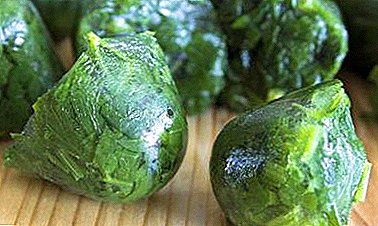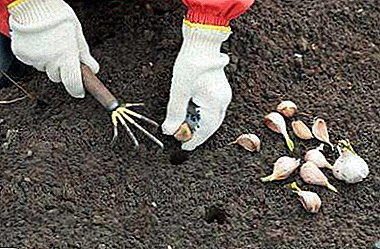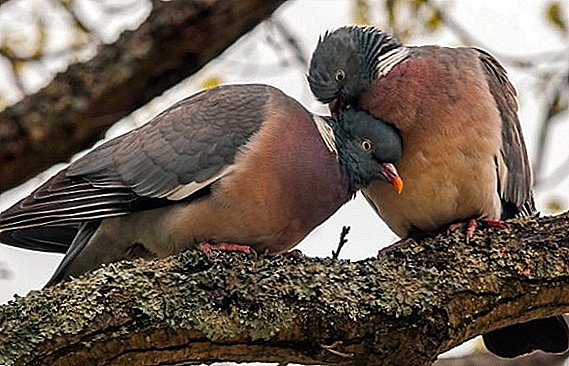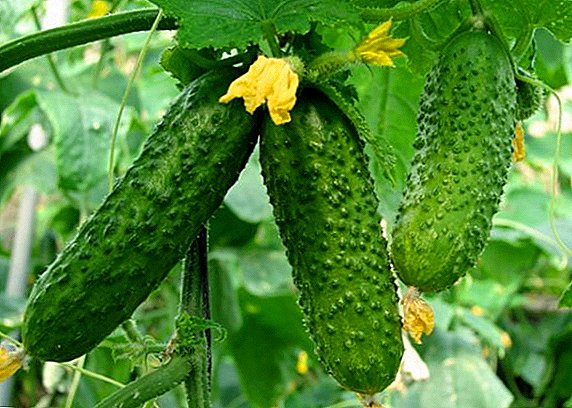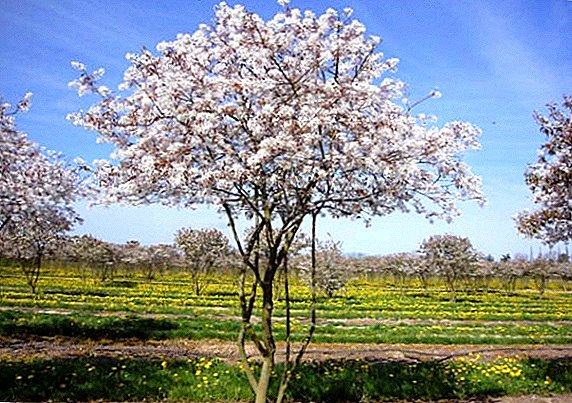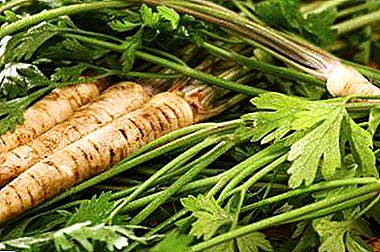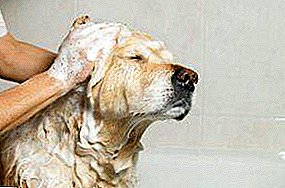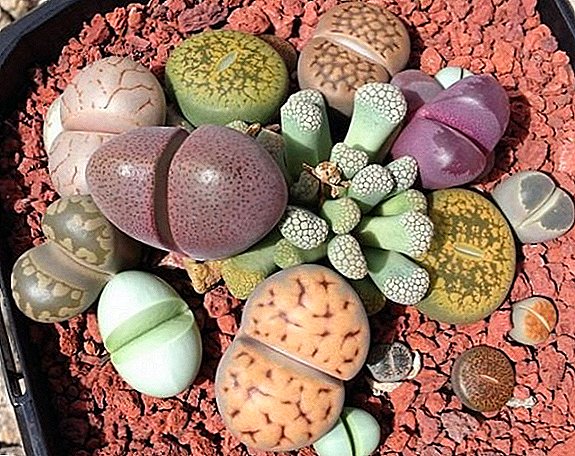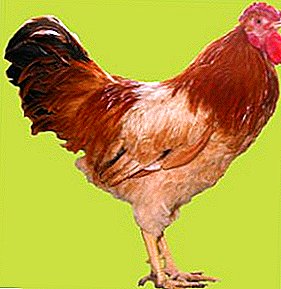
Poultry are divided into breeds different from each other in properties that a person uses in their activities. Breed is an artificially created type of domestic animals.
So, each breed of chickens, for example, has special qualities that are important for household needs. Yaytsenoskie breeds are bred for the sake of obtaining eggs, birds of meat breeds carry few eggs, but have an impressive mass, and from meat of mixed breeds they produce meat and eggs.
Ancestors of Poltava hens served exhibits on display in the city of Poltava already in 1895and in the period from 1928 to 1929. Poltava chickens discovered egg production unsurpassed for that time: 100 eggs per layer.
However, the development of poultry on an industrial scale led to a decrease in the number and productivity of native chickens.
Therefore, in order to preserve the indigenous breeds, local chickens were brought from the Karlovsky and Mirgorod districts of the Poltava region to the Borka farm, with which they began to carry out targeted activities. And already after 1953, biologists have deduced three species of this breed by the color of their plumage: clay, black and zozulist.
Origin and species
 Poltava black originally lived in the Lubensky district of the Poltava region.
Poltava black originally lived in the Lubensky district of the Poltava region.
However, to date, representatives of this breed is almost gone, but scientists are working on its renewal.
Poltava zozulistaya (cuckoo) breed of chickens, which appeared at about the same time as the previous one, is also considered to be extinct.
Currently, in poultry farms for the continuous supply of the population with food, only Poltava clay bird. This type of hen is also a local group of hens of the forest-steppe of Ukraine.
This breed of chickens is believed to have originated in the XIX century. in Romensky district of Poltava province. She was bred by crossing Aboriginal chickens with imported in the late XIX and early XX centuries. species of chickens, such as fawn orpingtons, new hampshire, wyandot and others.
In 2007, by order of the Ministry of Agrarian Policy, the Poltava clay breed of hens was officially registered as an egg-bearing and meat breed.
Breed description Poltava Clay
Clay chickens have a light and dark yellow feather cover with black coloring of the ends of the contour swing and contour tail feathers.
Medium sized head with bristles over muzzle, light brown short, darkened beak at the end, eyes yellow or orange, red with a white flew of lobe, thick neck, oval body with wings tightly attached to the body, exposed in front of the chest and abundantly developed mane .

Legs are light yellow or yellow of medium length, separated from each other, non-plucked, slightly protruding tibia. The developed tail forms an obtuse angle with the trunk.
The male can be identified by dark yellow wings, golden feathers on the neck, a rose-like or leaf-shaped crest with five regular teeth, a large red earrings and fully black with green shade kositsam and tail, as well as an important view.
Characteristics and features of cultivation
 The chick yield is 80-83%.
The chick yield is 80-83%.
Due to the well-developed instinct of brooding, the age at which the first egg is laid is 140-150 days. The mass of roosters is about 3.2 kg, chickens - 2.1 kg. Egg production reaches 160 - 217 (!) Eggs per year, and currently individual record breakers show egg production at 290 eggs per year.
The weight of one egg varies within from 55 to 58 g. The shell is brown because the birds of this breed are carriers of the goldenness gene, which also determines the coloring of the feather. Studies of eggs of this breed of hens, conducted in 1982, showed excellent quality of protein and an impressive thickness of the shell.
The yield of meat reaches 52%, bones - 10.7%; meat has a pleasant taste and juiciness due to thin layers of fat between muscle spindles.
Chickens of this breed have high vitality.
Back in 1970 V.P. Stolyarenko and co-workers noticed that the embryos of Poltava chickens are more resistant to the Rous sarcoma virus compared to embryos of other farmed breeds, and the resistance to neoplasm was more than four times higher than that of other breeds, times.
Birds are unpretentious, easily adapt to breeding conditions, have a calm character, but chickens are afraid of the cold. Eat as any fodder, and combined feed. They are adapted for floor breeding and for cultivation in equipped cells of various types, including incubators for artificial insemination.
There are a number of general recommendations for the correct maintenance of chickens. For outdoor breeding in a chicken coop, the best are individuals. place on a bed of straw, wood sawdust or dry peat, which must be changed to avoid the accumulation of pathogens in it.
Preference should be given to the latter, as the peat absorbs moisture from chicken feet, which prevents the spread of colds, and also helps not to break the demolished eggs.
When breeding in special containers, litter is not needed, but the floor in the cage is better to be made cellular, so that the excrement falls into the trays and does not infect birds. It is better to keep the trough in the light and at some distance so that the birds do not swim in it. For the purpose of heating, 3-4 lamps should be placed in the cage.
Birds need walks. However, when breeding without breeding, it is necessary to remember that chickens must eat, in addition to seeds and grass, also stones for chaffing chyme.
It is necessary to feed the birds in the winter season twice a day, and during the day to serve soft food (for example, bran, filled with water, greens, meat), in the evening - grain; in the summer it is enough to feed once, the rest of the birds will use themselves when walking.

As for the content of the Poltava clay chickens, they especially love feed from corn and corn waste. For growing one-day young stock, the around-the-clock light regime is the most appropriate, with its gradual reduction to 9 hours at 9 weeks of age and up to the bird at 18 weeks of age.
At the age of 7 weeks feed should have a high calorie and high protein content (20%). This will ensure adequate functioning of the breeding system for the full identification of gene potential in the reproductive period.
Birds of 7 weeks of age and older are fed compound feed with a low protein indicator (14%). Due to this, the chickens reach optimum weight and puberty.
It is necessary to avoid increasing the weight of the bird, as this leads to obesity. When grown in batteries, both in industry and in private, males are first placed in a cage, and after 2-3 days females are brought to them. The sex ratio in the population should be 1: 8 (there are 8 chickens for one rooster).
Now the chickens of this breed are kept only in private plots or in collectors in order to preserve the gene pool. In Russia, unfortunately, it is almost impossible to find a chicken farm that breeds them. You can buy a bird only in Ukraine or from a private person.
Analogs
Representatives of this variety can be replaced by egg-type hens of the productivity of such breeds as white Leggorn and Russian white.
White leggorn in terms of egg production, it is the most productive variety of the current domestic chicken.
Individuals have unpretentiousness, endurance, rapid growth of young. Egg laying starts as early as 4.5-5 months. Egg production reaches 300 eggs per year. Egg weight 55-58 g
Russian white also unpretentious to external conditions. Egg production in the first year reaches 200-230 eggs with an egg mass of 55-56 g.
In subsequent years, the number of eggs laid is reduced by 10-20%, but the weight of an individual egg increases to 60 g. Chickens start laying eggs for five months.
 Not everyone knows the rules of how to care for an orchid at home. This knowledge would help avoid simple mistakes.
Not everyone knows the rules of how to care for an orchid at home. This knowledge would help avoid simple mistakes.Thus, for almost a century-long history of the formation of the Poltava clay rock, thanks to the targeted artificial selection measures from the aboriginal variety with low economic indices, the bird was transformed into a breed with high egg production, good meat taste, vitality and resistance to various diseases.
Successful results of artificial selection are possible only in large farms or poultry farms with the obligatory participation of scientists.


